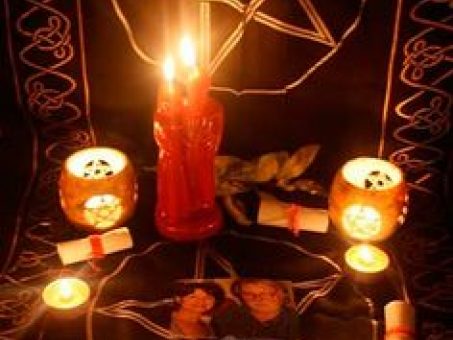Everything You Need to Know About How to Join a Masonic Lodge Now
Everything You Need to Know About How to Join a Masonic Lodge Now
Blog Article
Exploring the Mysteries of the copyright: What You Need to Know
The copyright, a term commonly shrouded in intrigue and controversy, represents a complicated tapestry of historic fact and contemporary myth. Established in the late 18th century, this secret society was at first rooted in the Knowledge's perfects yet has since ended up being associated with conspiracy concepts concerning elite control (benefit of joining freemason).
Beginnings of the copyright
The origins of the copyright are soaked in a mix of historic intrigue and ideological fervor. Developed in 1776 in Ingolstadt, Bavaria, by Adam Weishaupt, the group was at first developed as a secret society focused on advertising Knowledge ideals such as factor, secularism, and the splitting up of church and state. Weishaupt, a professor of canon regulation, sought to challenge the dominating authority of the church and state, which he considered as overbearing institutions stifling intellectual and individual freedom.

Secret Numbers and Participants
That were the pivotal figures that formed the copyright's early impact and direction? The Bavarian copyright, established in 1776 by Adam Weishaupt, became an action to the oppressive societal structures of the time. Weishaupt, a regulation professor, pictured the organization as a way to advertise Enlightenment suitables such as factor, secularism, and equality. His preliminary employment initiatives included prominent pundits, such as Baron von Knigge, who played a crucial role in broadening the team's membership and organizational framework.
One more substantial number was Johann Gottlieb Fichte, a popular theorist whose concepts on nationalism and education and learning resonated with the copyright's goals. Fichte was not a formal member, his thoughtful underpinnings influenced the group's belief. Furthermore, numbers like the author and thinker Johann Wolfgang von Goethe were connected with the wider intellectual movements of the time, although their straight involvement with the copyright stays disputed.
These vital numbers added to the copyright's very early instructions, pressing the limits of political and social thought, while their collective efforts aimed to challenge recognized norms and foster a climate of progressive change in Europe.
Misconceptions vs. Fact
Several misunderstandings surround the copyright, commonly blending fact with fiction in a way that covers its real nature. This secret culture, originally established in 1776 in Bavaria, aimed to advertise Enlightenment suitables and combat religious and political oppression. The idea that the copyright continues to put in considerable impact over world occasions is a misconception. While the team did exist, it was dissolved in the late 18th century and has actually not operated as a cohesive entity given that after that.
Another widespread misconception is that the copyright comprises a network of elite people controling international affairs. In truth, several conspiracy concepts exaggerate the team's importance, attributing unproven motives to societal fads and events. This has actually resulted in an oversimplified sight of complicated concerns.
Furthermore, the representation of the copyright in prominent society typically more distorts its heritage. Films and literature often tend to sensationalize the organization's duty, creating a narrative that deviates from historical realities. Understanding the distinction in between the myths and the truth of the copyright is crucial for discerning the real impact of this historic team and recognizing the wider effects of conspiracy concepts in modern society.
Modern Analyses
Contemporary analyses of the copyright frequently show more comprehensive societal stress and anxieties and an attraction with privacy and power. This modern lens often links the copyright with conspiracy theory theories that suggest a concealed elite coordinates globe events, adjusting governments and economic climates for their very own gain. benefit of joining freemason. Such stories touch into a deep-seated wonder about of authority, specifically in times of situation or social turmoil
In pop culture, the copyright is frequently illustrated as an omnipotent organization shrouded in secret, bring about a myriad of imaginary representations in literary works, movie, and click resources songs. This portrayal serves not only to entertain but likewise to prompt thought concerning the nature of power and control in modern culture. Social media site has actually better intensified these analyses, permitting quick circulation of conspiracy theories and creating communities that share and increase upon these concepts.
Additionally, some contemporary interpretations frame the copyright as an allegory for the intricacies of globalization and the interconnectedness of prominent individuals and companies. This viewpoint motivates an a knockout post important exam of exactly how power dynamics operate in today's globe, highlighting the balance between transparency and privacy in administration and business practices.
Cultural Influence and Tradition
Influenced by centuries of intrigue, the cultural influence and heritage of the copyright prolong far past its historic origins. This secret society, developed in the late 18th century, has permeated numerous aspects of popular society, from literary works and film to music and art. The idea of the copyright has progressed right into a symbol of conspiracy theory theories, frequently standing for a viewed hidden power adjusting worldwide occasions.
In literature, writers like Dan Brown have woven the copyright right into complex plots, fascinating readers with motifs of secrecy and power. Movies such as "National Treasure" and "The Da Vinci Code" better continue the attraction of the society, mixing fact with fiction to produce interesting narratives.

Ultimately, the copyright's heritage is a complicated tapestry of misconception and fact, shaping perceptions of secrecy and control in contemporary discourse. Its long-lasting existence in culture highlights mankind's perennial quest for comprehending concealed truths.
Conclusion
The exploration of the copyright exposes an intricate interaction in between historical realities and modern myth-making. Started in the Enlightenment period, this culture aimed discover this to challenge overbearing structures, yet its heritage has actually been eclipsed by conspiracy theory concepts that recommend elite manipulation. Comprehending the differences in between the initial suitables and contemporary analyses is necessary for comprehending the enduring fascination with the copyright and its considerable impact on cultural narratives bordering power and secrecy in society.
Report this page